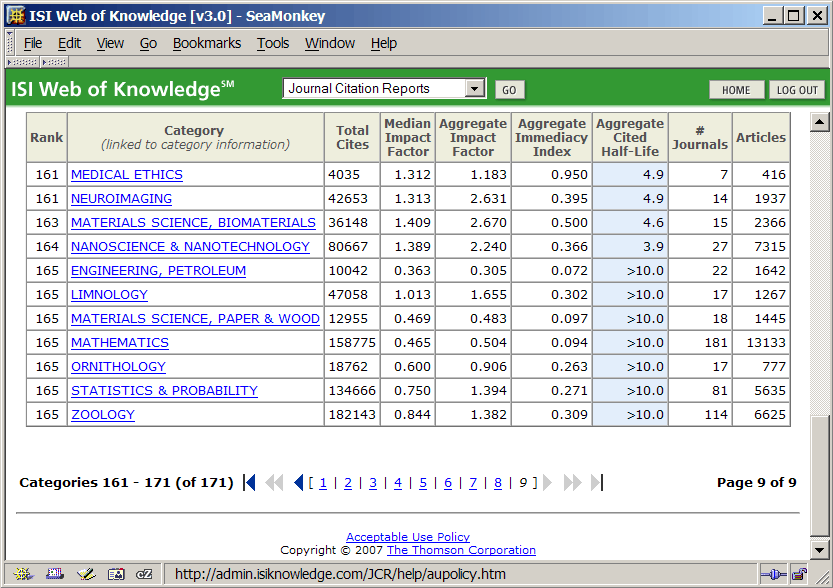I wanted to compare the aggregate cited half-life of works in different scientific disciplines. This figure tracks the median age of the articles cited during the last year. The ISI Web of Knowledge offers such a tool, and allows sorting by the a field's half life. I found the first three entries in the list, mineralogy (10), orthopedics (9.7), and agriculture (9.5), slightly odd.
I would expect orthopedics to have a faster turnover rate of scientific
knowledge than, say, mathematics or even physics. I then paged to the end
of the list of the 171 disciplines to see those dynamic fields with the
highest turnover rate. And there, right under materials science (4.6) and
nanoscience (3.9), were mathematics, ornithology, statistics, and zoology.
Their aggregate cited half-life? It was "> 10.0". Obviously the system's
sorting algorithm wasn't tuned for sorting such fields.

Apart from the misplacement of the seven disciplines with a cited half-life >10, this error distorts by 7 the rank of all other fields. Thus the rank of software engineering, with a venerable cited half life of 8.3 years, is 31 (top 18%) rather than the claimed 24 (top 14%).
Comments Post Toot! TweetUnix make vs Apache Airflow (2024-10-15)
How (and how not) to present related work (2024-08-05)
An exception handling revelation (2024-02-05)
Extending the life of TomTom wearables (2023-09-01)
How AGI can conquer the world and what to do about it (2023-04-13)
Twitter's overrated dissemination capacity (2023-04-02)
The hypocritical call to pause giant AI (2023-03-30)
AI deforests the knowledge’s ecosystem (2023-03-16)
How I fixed git-grep macOS UTF-8 support (2022-10-12)
Last modified: Friday, January 12, 2007 9:50 am
Unless otherwise expressly stated, all original material on this page created by Diomidis Spinellis is licensed under a Creative Commons Attribution-NonCommercial 4.0 International License.




